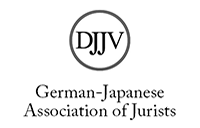Insolvency Law Responses to a National Crisis: Chun Jin Great East Japan Earthquake and Guidelines for Individual Debtor Out-of-Court Workouts
Abstract
This article presents the first detailed English-language analysis of the Guidelines for Individual Debtor Out-of-Court Workouts (‘Guidelines’) and complements a tentative translation of the original Japanese version translated into English by the authors. The immediate catalyst for the publication of the Guidelines in August 2011 was the socalled ‘double loan crisis’, which refers to the situation where some victims of the Great East Japan Earthquake are suffering from the double hardship of paying out existing loans whilst seeking new finance to rebuild lives, businesses and homes; the Guidelines are designed to help individuals (kojin) overcome such financial hardship. The Guidelines were pulled together very quickly and commenced operation on 22 August 2011, but they build on other established out-of-court procedures in Japan dealing with corporate insolvency, including the Guidelines for Multi-Creditor Out-of-Court Workouts (‘Corporate Guidelines’), the operation of Japan’s Industrial Revitalization Commission and the Enterprise Revitalisation ADR Procedure. The procedure and wording of the Guidelines are closely based on the Corporate Guidelines with amendments to reflect the Guidelines’ focus on personal insolvency and dealing with the aftermath of a disaster. The article gives a detailed commentary of the Guidelines’ provisions and compares them to existing formal Japanese insolvency procedures. The Guidelines reflect typical Japanese legislative drafting techniques and the variety of opinions held by the diverse group of drafters. Some issues may have been controversial for the drafters to provide final and definitive pronouncements, and others may have been left deliberately ambiguous to allow market participants the chance to adapt the Guidelines to individual cases.
The article also examines the drivers and stakeholders which led to the Guidelines’ creation, and argues that their limited success is not just due to a failure in public relations. The government estimated that up to 20,000 people might be eligible for the Guidelines, but very few people have benefited from the Guidelines. Only 300 individual plans were filed in the first 12 months of the Guidelines operation, despite over 2000 consultations being facilitated. The article examines the current status and operation of the Guidelines and argues that these types of informal mechanisms have an important role to play in a functioning insolvency regime, despite some initial teething problems. They also provide additional flexibility to Japan’s modern insolvency procedures and reflect global trends for dealing with debtors in financial hardship. Japanese courts are also building on a tradition of flexibly resolving practical issues arising out of specific insolvency circumstances, which should lead to better outcomes for disaster victims. Creditors have little to lose in utilising the Guidelines given that they are under no legal obligation to consent to any debt reduction or release, but there is anecdotal evidence that financial institutions are individually negotiating workouts directly with debtors and obtaining terms more favourable to the institutions than what they might otherwise achieve under the Guidelines. Financial institutions may find themselves under social and political pressure to highlight the existence of the Guidelines to disaster victims and agree to more payment plan proposals in future.





